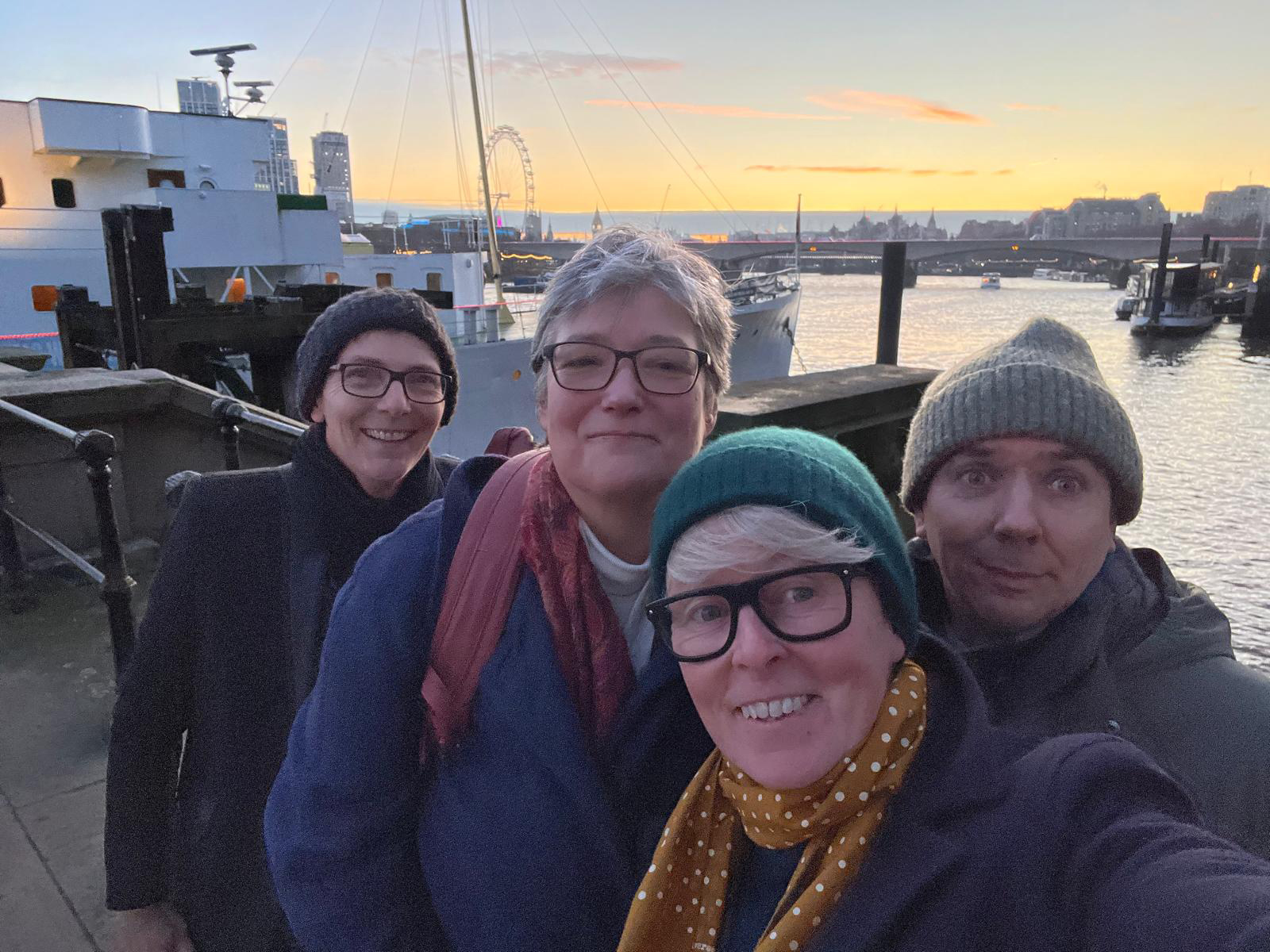
An Opened Letter by Abraxas Academy
“Regardless of personal identities, the armed forces willingly choose to give their word and sign an oath dedicating their lives to country and to their friends.
The same format, a page, can hold immense power over the individual and can be presented as evidence that can destroy lives and careers.
Words on a page are used to define our identities, our pronouns, express our inner selves in moments of fear and bravery and can stand witness to our sacrifice and contribution to our Nation’s History.”
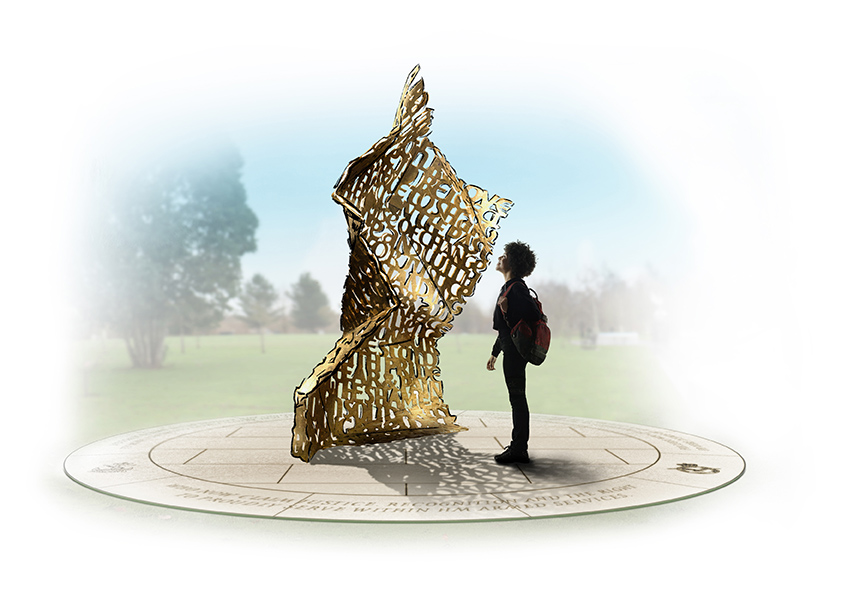
Concept
“A monumental “Opened” letter, a pierced bronze, free standing sculpture. We have chosen the written word on a page as a device to celebrate and memorialise the struggle and fight for the LGBTQ+ contribution to the Nations armed forces.
Without recorded history people are invisible. Invisibility leads to marginalisation and isolation. Isolation is a weapon used to withhold agency. Forced to hide, unable to fully belong. Representation equals accessibility. To be seen is to be acknowledged.
The abstracted nature of the composition allows the representation and interpretation of many identities without the need for definitive labels. A discarded statement legible from a distance that encourages closer inspection and engagement. The folds in the paper, textured and changed to represent the re-attachment of torn pieces. The re-telling of history.”
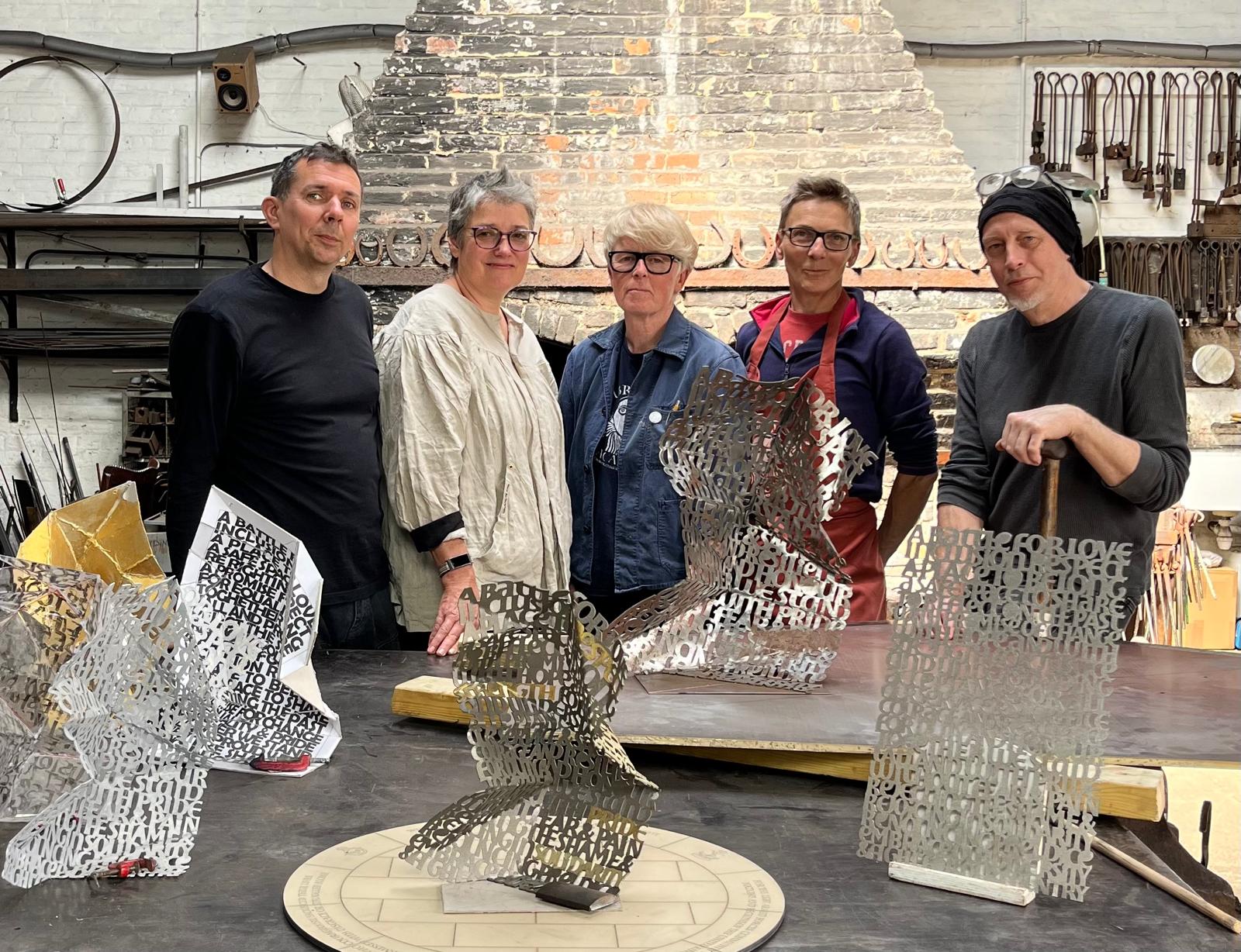
Visibility
“The sculpture is floor mounted, grounded on a hard formal landscape, leaning gently inward on a base that dedicates the memorial to the three services.
The material and the reflective nature of “Naval Bronze” creates a beautiful and powerful visual connection to the medals worn by returning military. A metal with three component parts that is stronger together than apart.”
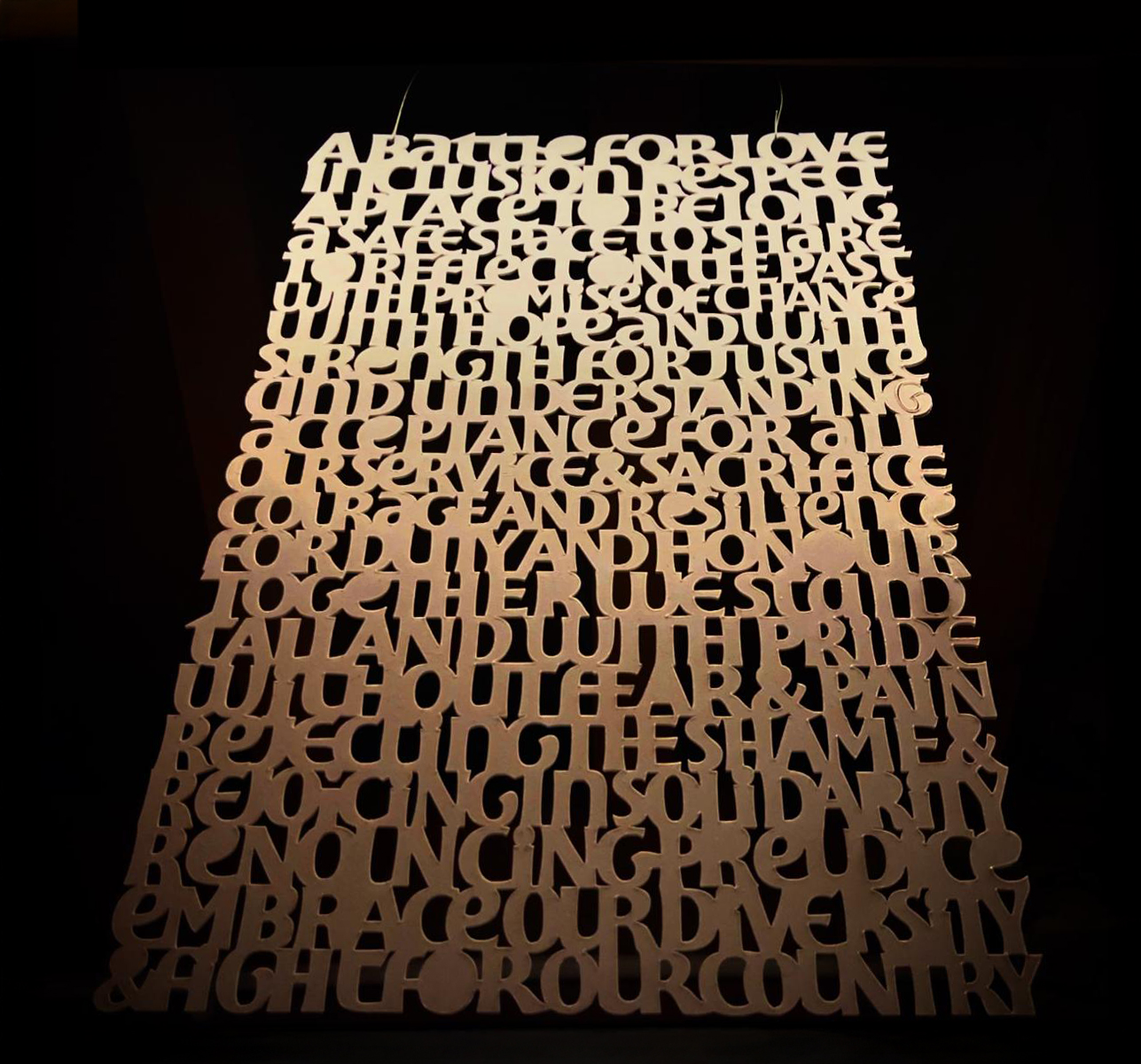
Reflection
“The letter is a combination of words taken from evidence collected from personnel who have experienced exclusion, discrimination and in some cases have died as a direct result of exposure of their true selves. Tragically the evidence responsible for ending many careers, and in some instances led to prosecution and expulsion of personnel, was written in the accused own hand.
Letters from lovers weaponised against the beloved. Letters are often the only source of comfort in extreme circumstances, on the battlefield or far away from home. The fact these important connections, encouraged for heterosexual personnel were used to vilify and belittle LGBTQ+ personnel, and is one of many simple acts of inhumanity forced upon the individual. Just like the reclaiming of the word “Queer” by the LGBTQ+ community we suggest reclaiming this simple act of love in the form of a monumental page holding the words of endearment.
In this design, we would ask you to witness the throwing away of reports and statutes that prohibit and marginalise. Soldier first, then person. Equality and diversity celebrated openly alongside the commitment of service to country. You can walk around the letter, be drawn to it from a distance and engage by being inside its darker surface, read the words both negative and positive, from inside, shadowed and hidden, or chose to come out of the page and reflect on the bright reflective surface of the future. You become both witness and participant to the past and to change.
We suggest the page as a universally recognised device that will speak to the past as well as stark reminder to future generations.”
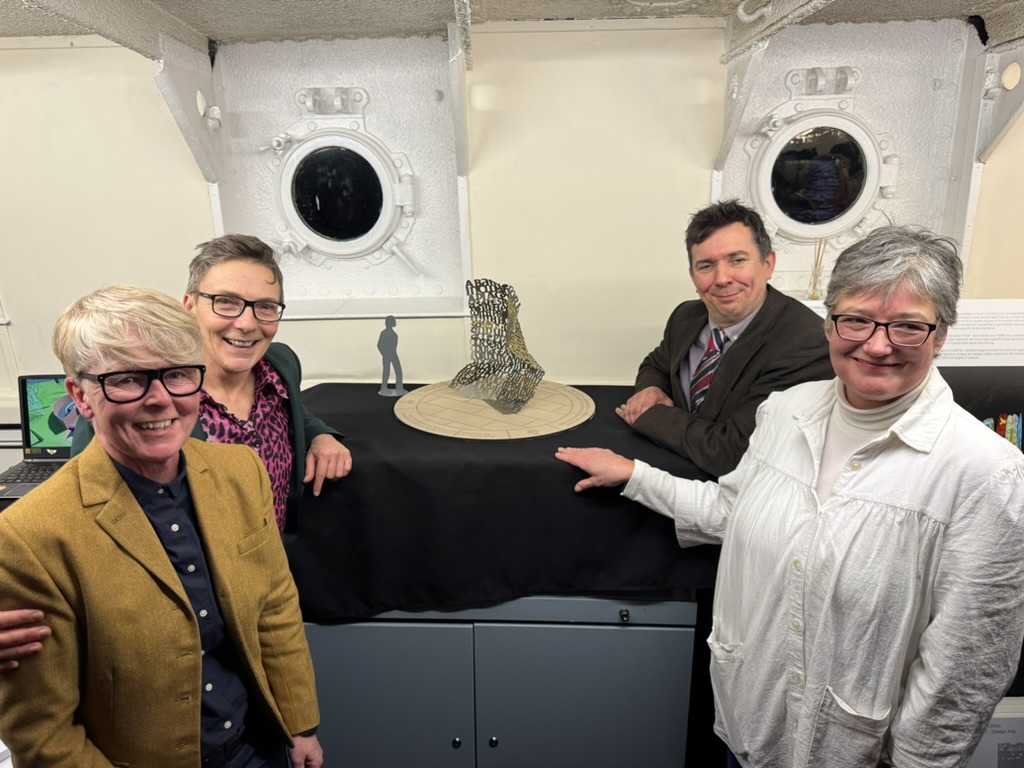
The Team
“Working together as a collective, artists Charlotte Howarth, Nina Bilbey, Sue Aperghis, James Spedding and Roger Foyster at Holkham Forge and Kate Holmes are behind the LGBTQ+ armed forces community memorial design.
Their winning idea is an Opened, free-standing letter made from forged bronze. The letter is a combination of words taken from evidence that was collected from veterans who were personally affected by the LGBTQ+ ban.
The concept for the memorial symbolises the personal letters of endearment collected as evidence to convict, expel and imprison LGBTQ+ personnel during the ban, and the anxiety of living in constant fear of receiving a formal letter accusation.”
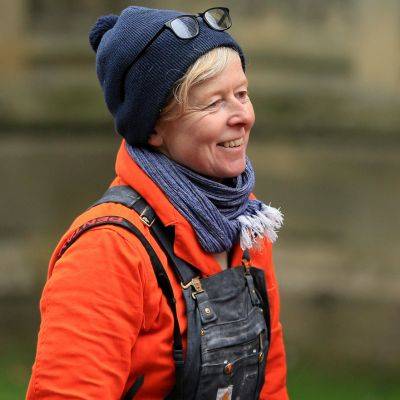
Nina Bilbey
Nina is an award-winning sculptor, teacher, and mentor and has been creating beautiful objects for over thirty years.
Her work can be seen on many heritage buildings, notably the statues of the Queen and Prince Philip for Canterbury Cathedral. Nina recently installed the Cathedral’s first internal replacement sculptures in over one hundred years.
Nina is also a long time Stone Carving Tutor at The City and Guilds of London Art School, the co-founder of the Abraxas Stone Carving Academy and an enthusiastic host of the podcast “The Stone Carving and Lettering takeaway” championing the voices of contemporary carvers.
“We hope this memorial will help ease some of the distrust and pain experienced by LGBTQ+ veterans and be a beacon of hope for future generations who will witness this work and be reminded of the healing power of reconciliation and the public acknowledgement of historic discrimination.”
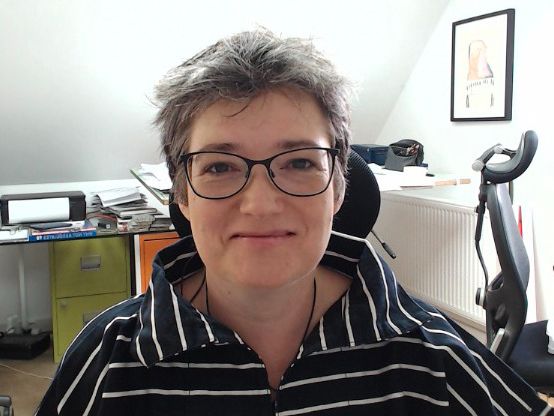
Charlotte Howarth
Charlotte Howarth is a leading and respected letter-cutter and stone carver with over 35 years experience. Tutored by David Baker, and after her graduation from London’s renowned City and Guild College, apprenticed to Richard Kindersley. She has continued her practice whilst in turn mentoring up and coming letter cutters. Her studio Making Marks specialises in creating beautiful artworks and memorials for public and private spaces.
Powered by a joy of the craft and process her hand drawn and carved lettering focuses on high quality design exquisitely executed. Past public projects have included designing the lettering for the Donor Windows in the Queens Gallery at Westminster Abbey (in conjunction with the Cathedral Studios in Canterbury), the Baby Haven Memorial in Belfast City Cemetery and numerous private commissions from memorials to house names.
“This is extremely personal for some of our members, some of which are members of the LGBTQ+ community including one who did not enlist due to the ban, and a member who served in the armed forces after the ban was repealed. Every member of the team is a highly skilled craftsperson with their own areas of expertise. Inspired by the historic and important subject and the exciting act of collaboration we have worked tirelessly to design a beautiful bespoke sculpture we hope Fighting with pride charity and the community as a whole will be proud to call their own.”
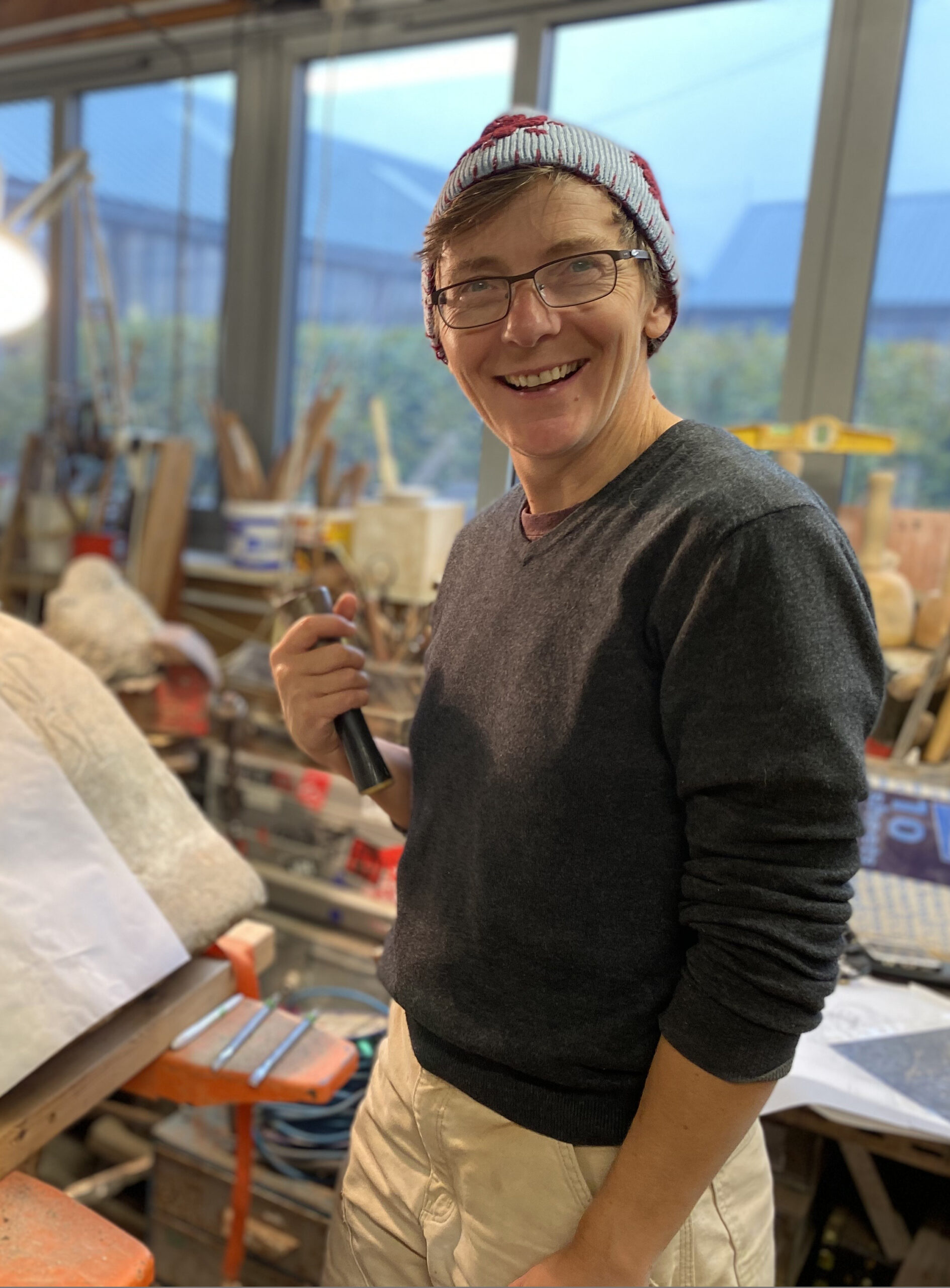
Sue Aperghis
After a long standing career in graphic design and a life-changing event Sue followed a dream, shelving the computer, to work with a pencil and chisel. Sue completed a three year course in Historical and Architectural Stone Carving at the City and Guilds of London Art School.
Carving, for Sue, is an addictive and cathartic journey that never ceases to stretch her creativity.
In all her work, Sue’s aim is to produce something beautiful, meaningful and memorable.
“My work is a reflection of an ambling mind, a curiosity in life, and the drive to create.”
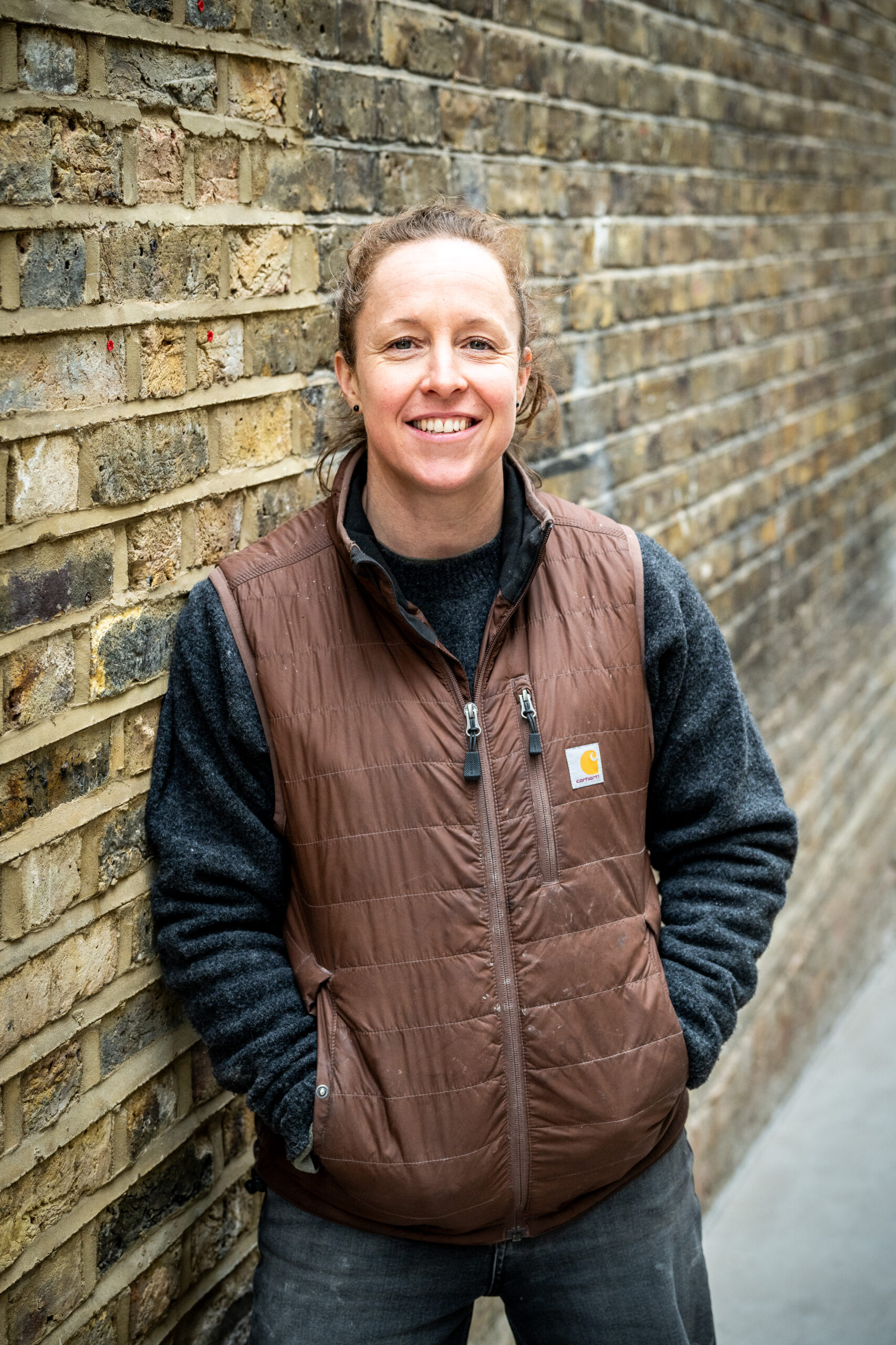
Kate Holmes
Kate is a bit of a nomadic creature, but essentially considers herself Northern.
Following 9 years in the military as part of the Intelligence Corps, Kate left in search of a new challenge. This led her to Moulton College where she completed her initial masonry training in her early 30s. A decade on, she graduated from The City & Guilds of London Art School with a BA in Historic Carving, marrying creative carving and modelling with process driven masonry know-how.
Having a head for heights she is a rope access abseiler, which has led to working on some of the most historic and prestigious stone buildings in the UK, including York Minister, All Souls College Oxford and Winchester Cathedral.
“As someone who served in the army after the repeal of the gay ban, I never felt its direct impact, but I deeply appreciate the sacrifices of those who fought for that change. This memorial feels very personal to me, and I hope it serves as a tribute to those who paved the way for service members like myself.”
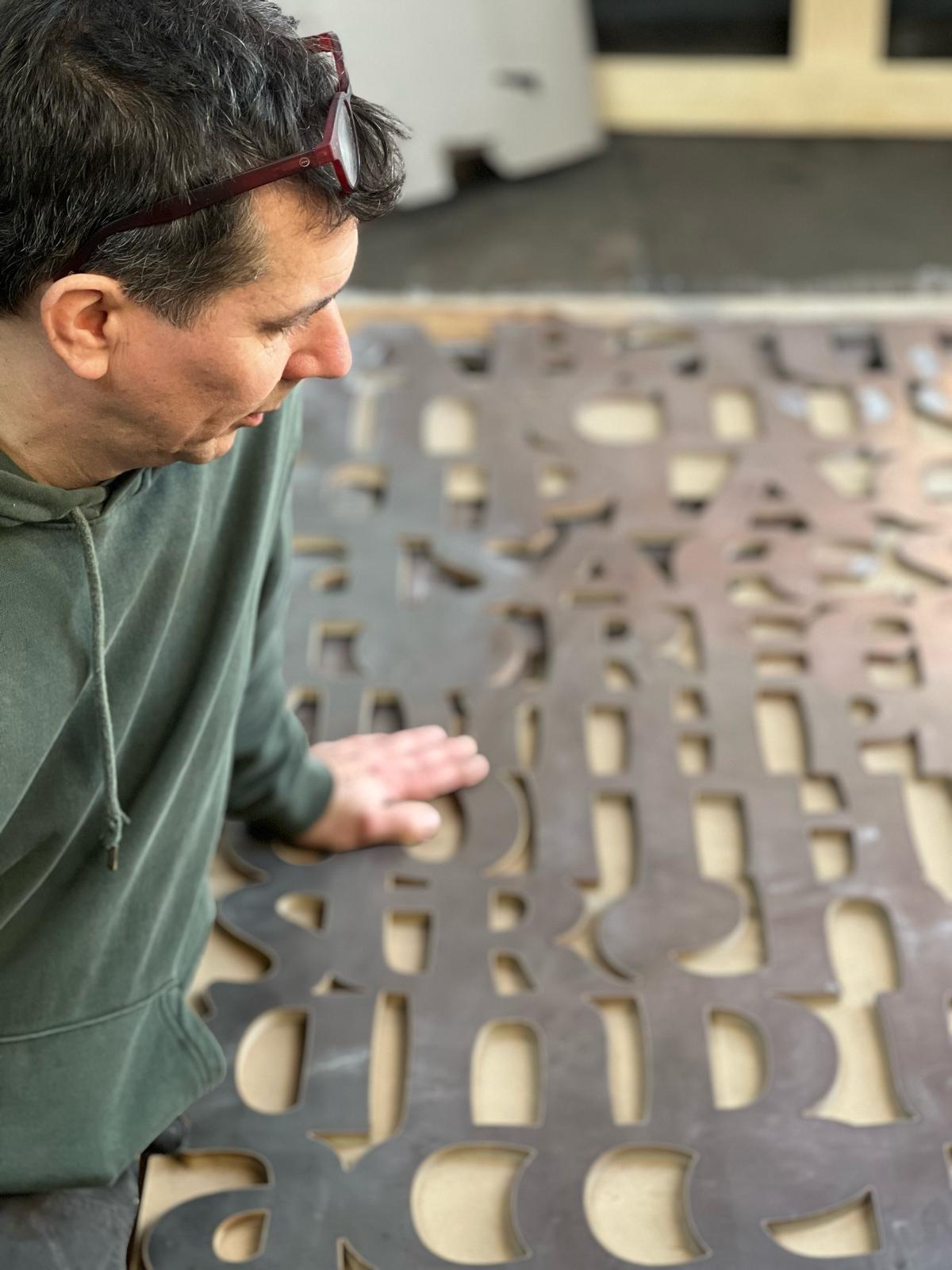
Holkham Forge
Helen Spedding , Roger Foyster and James Spedding have worked together (and and individually) on a wide variety of projects in the intervening years from small domestic items to large pieces of public sculpture. The common thread is that work is bespoke and beautiful, whether it is recreating 12th century ironwork for Norwich Castle or forging aluminium bronze for the LGBT+Armed Forces Community Memorial.
Collaboration between the Holkham Forge and Abraxas Academy teams has formed a group with a wealth of experience in multiple media and at various scales and led to the creation of a Memorial that acts as a beacon for the future while reflecting and commemorating dark episodes in the past.
“It’s been such a privilege to take the Veterans’ own words and create an object that tells their story for future generations.”